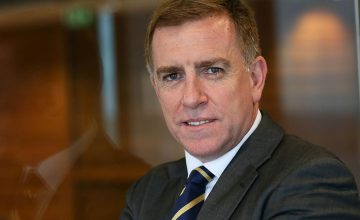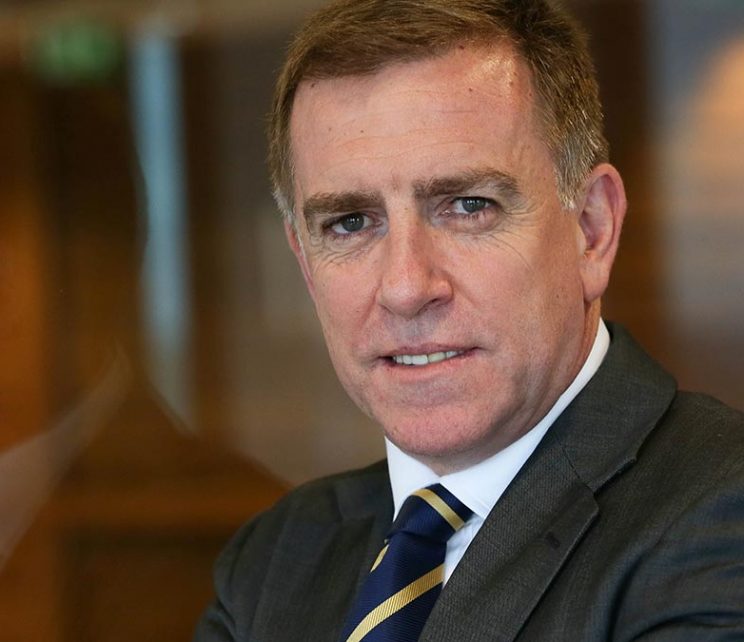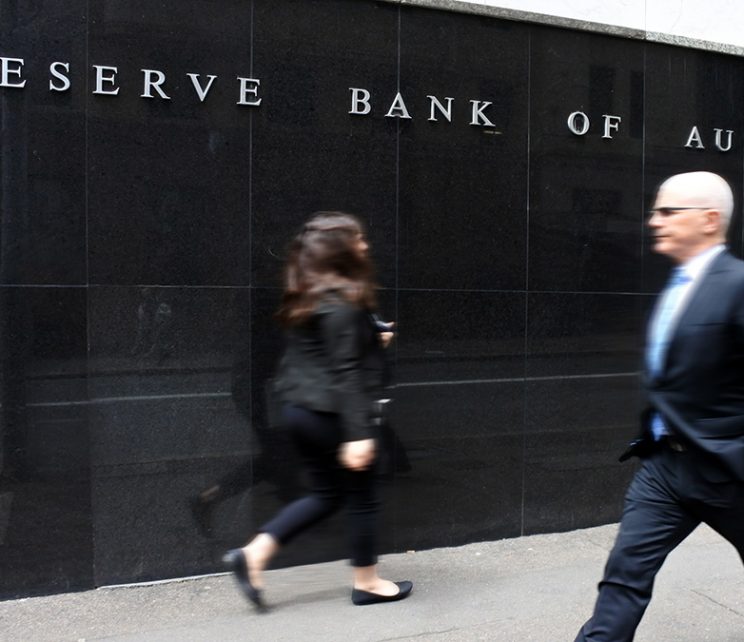
Mainstream Online Web Portal
LoginInvestors can view their accounts online via a secure web portal. After registering, you can access your account balances, periodical statements, tax statements, transaction histories and distribution statements / details.
Advisers will also have access to view their clients’ accounts online via the secure web portal.
The Point
Quick, actionable insights for investors
Income and Fixed Interest

Tim Hext: Inflation is higher. But is it ‘materially’ higher? That’s the big question
After yesterday’s strong inflation numbers, focus now turns to the RBA’s Nov 7 meeting.
The rates decision rests on the RBA’s definition of ‘materially higher’ and ‘low tolerance’, says Pendal’s head of bond strategies Tim Hext.
RBA minutes mention a “low tolerance” to upside inflation surprises. Meanwhile governor Michelle Bullock has said the board won’t hesitate to hike if there’s a “material revision” to the inflation outlook.
“What is material?,” ponders Tim.
Q4 inflation is expected at around 0.9%, leaving headline inflation at 4.3% and underlying at 4.1%, he says. That would be about 0.2% higher than the RBA’s last forecast.
We’ll get a sense of the latest forecast (due Nov 10) with the rates decision.
“At these levels there is no clear trade, since it will be line ball,” says Tim.
“If I’m pushed, I think Bullock will be keen to show her inflation-fighting credentials by putting in one hike, even though she was probably hoping today’s number would let her off the hook.”

Weekly fixed interest wrap: close call on next rates decisions; govt bonds at 5pc
Quick view
Weekly fixed interest wrap: close call on next rates decisions; govt bonds at 5pc
Two years ago people would have laughed if you said you could buy an Australian Government bond at 5 per cent, says Pendal’s head of bond strategies Tim Hext.
“Full disclosure, I would have joined in.”
On Tuesday, though, the government’s debt manager, the AOFM, issued a new 2054 maturity bond at 4.93%.
“Given subsequent moves in US bonds, that yield is now around 5%,” says Tim.
Meanwhile a Northern Territory 2042 bond is yielding around 6% and a new CBA 10-year bond is 6.45%.
“As low-risk, fixed-interest returns get higher and higher, the hurdle rate for risk assets should also rise,” says Tim.
“If you back the RBA to keep inflation at 2.5% over the next decade, investors should see their money grow at a faster rate with low credit risk.
“Fixed interest is well and truly back. “

China’s economy is showing signs of recovery. Here’s how our fixed income team is responding
Quick view
China’s economy is showing signs of recovery. Here’s how our fixed income team is responding
Recent data suggests China’s economic activity could be starting to stabilise.
Monthly industrial output sped up and retail sales grew faster than expected. Is this a turning point in the economic cycle?
That remains to be seen, cautions Pendal’s head of income strategies Amy Xie Patrick, who has taken a close look at the latest signals.
“It’s been only a few months since hopes for a re-opening led boom in economic activity were dashed,” says Amy.
“We think activity is now stabilising on a cyclical basis, and China’s economy can continue to gradually recover into the end of the year.
“But structural drags on the economy are heavy and deep-rooted.”
Amy has just published an article covering the strength of the recovery, structural issues and implications for global growth and investing.

Tim Hext: Australian business remains resilient as we enter spring
Quick view
Tim Hext: Australian business remains resilient as we enter spring
Business managers believe the economy remains on a decent footing and has even slightly picked up from July.
That’s the finding from NAB’s latest monthly business survey.
“The soft landing looks on track, at least for now,” says Pendal’s head of bond strategies, Tim Hext
“Businesses are not confident about the future, but still see conditions as favourable and even improving.”
But investors should separate the nominal economy from the real economy (adjusting for inflation), says Tim.
“Nominally, higher population growth has seen some expansion in the economy and increasing demand for goods and services.
“On the real side, inflation and higher rates has meant individuals are tightening their belts.
“Business knows this, and when the population growth falls back next year the nominal economy will also start feeling this.
“For now, though our models show rate hikes are still more likely than cuts, though the RBA looks happy to sit out the next few months.”

The good news? We’re avoiding recession. The bad news? Living standards are going backwards
Quick view
The good news? We’re avoiding recession. The bad news? Living standards are going backwards
This week the ABS released our latest national accounts – quarterly estimates of economic flows such as GDP, consumption, investment, income and saving – for the June quarter.
What did we learn?
“First, the good news,” says Pendal head of bond strategies Tim Hext. “We are avoiding a recession.
“GDP is 2.1% higher than a year ago, though slowing. It’s been 0.4% for two quarters now and will likely end the year near 1.2% – slightly higher than the RBA forecast of 0.9%.”
The bad news?
“We’re clearly in a per-capita recession,” says Tim. That means economic growth is not keeping pace with population growth.
Which means the average person is going backwards in their standard of living.
“Our population grew by 0.7% in Q2, the economy only 0.4%. GDP per capita is now 0.3% lower than a year ago and 0.6% lower than six months ago.”
Why is this happening and what’s next?

Inflation back below 5pc – but getting to 2-3pc remains a challenge
Quick view
Inflation back below 5pc – but getting to 2-3pc remains a challenge
Annual inflation fell below 5 per cent in July and looks on track to hit 4 per cent or lower by the end of the year as 2022’s higher numbers drop out.
That reduces any urgency around further rate hikes – particularly since the fixed-rate cliff is now peaking, which effectively increases rates independent of the RBA.
However, the battle to get inflation back into the 2-3% band will still be a challenge next year and rate cuts seem a distance away, says our head of government bond strategies Tim Hext.
When Dr Michele Bullock takes over as RBA governor on September 18 she will be keen to establish her inflation credentials – so any move to a dovish outlook is unlikely, says Tim.
“For now, rates remain range-bound – as do risk markets,” he says.

Tim Hext: Wage growth remains under control – for now
Wage growth – a key indicator that the RBA watches when weighing up rates decisions – was surprisingly benign in the June quarter.
The latest Wage Price Index, which measures salary changes across 18 industries, shows overall wages grew by only 0.8% in the period.
That’s three quarters in a row at 0.8%, suggesting an annual run-rate of only 3.2%, points out our head of bond strategies Tim Hext. (The official number is 3.6% due to a 1.1% result in September).
“Wages across the economy are likely to settle on 4% rises for several years yet,” predicts Tim.
That continues to buy time for the RBA – the market expects one more hike towards year-end or early 2024.
The outlook for bond investors?
“Short-end bonds should remain rangebound for now. Longer bonds remain vulnerable to higher long-end rates globally.”

Another Chinese property developer is in trouble. Here’s what it means
Quick view
Another Chinese property developer is in trouble. Here’s what it means
China’s property sector woes continued this week as another big property developer found itself in trouble.
Country Garden – China’s biggest property developer based on last year’s contracted sales – missed US$22.5 million in payments on two bonds.
The company is described as facing “periodic liquidity stress“.
Country Garden will probably find enough money to pay the coupon within the 30-day grace period, says our head of income strategies Amy Xie Patrick.
But it needs another $US2 billion for other payments, plus cash to complete pre-sold projects.
As the confidence crisis in the property sector deepens in China, levered property developers need strong new pre-sales to complete older pre-sales.
But monthly sales are well down on 2021 down and still falling.
“This is what is causing the ‘periodic liquidity stress’ – though I would describe it as existential rather than periodic,” says Amy.
Here Amy explains the detail and what it means for the global outlook

Tim Hext: What to pay attention to in the RBA’s latest monetary policy statement
Quick view
Tim Hext: What to pay attention to in the RBA’s latest monetary policy statement
When the RBA releases its quarterly monetary policy statement, our head of bond strategies Tim Hext first reads through the forecasts and then goes to the boxes.
“Box A” and “Box B” are typically special interest topics, offering an insight into what our central bankers are discussing and investigating internally.
Box B in the latest statement covers insights from the RBA’s business liaison program, including recent chats with 230 Australian businesses and organisations.
“Box B reveals a growing view that businesses are seeing an easing in demand and costs, consistent with an increasingly neutral RBA,” says Tim.
It also shows businesses expect an easing of wage rises in the year ahead – even though the Wage Price Index isn’t forecast to peak until the end of the year.
“This shows the RBA will likely stare down commentators who talk about higher wages meaning further rate hikes,” argues Tim.

Amy Xie Patrick: The market’s getting excited about China again, but it may be premature
Quick view
Amy Xie Patrick: The market’s getting excited about China again, but it may be premature
THE latest message from China’s top decision-making body caused a stir this week when investors noted softer language on property.
For the first time since 2016, President Xi Jinping’s signature slogan that “houses are for living, not for speculation” was missing from a note that followed a Politburo meeting.
That got the market excited about the potential for a meaningful China stimulus push via the property sector.
But the market is getting ahead of itself, says Pendal’s head of income strategies Amy Xi Patrick.
“The line has likely been dropped because it’s simply no longer needed. Buyers are no longer speculating. They are actively selling in an attempt to exit the property game altogether.”
Amy believes there is no silver bullet for the Chinese economy.

The case for bonds as rate hikes push Australia towards recession
Quick view
The case for bonds as rate hikes push Australia towards recession
Recession talk increased in Australia this week after the RBA’s decision to lift rates for the 12th time in just over a year.
Pendal’s Anna Hong agrees the chance of a recession in Australia is increasing with rate hikes.
That bolsters the case for Australian government bonds, cash and high-grade investment credit, argues Anna, an assistant portfolio manager in Pendal’s Income and Fixed Income team.
Australia is one of only a handful of countries to record a budget surplus this financial year and – not withstanding the threat of recession – remains in good economic shape, she says.
“From an economic perspective, even if things go wrong, the government is in a good position to support the Australian economy.
“Australian banks are world-leading in capital strength. As a result, assets within Australian shores are safer than almost any other part of the world.”

Tim Hext: Inflation remains stubbornly high — but not as high as you may think
Quick view
Tim Hext: Inflation remains stubbornly high — but not as high as you may think
The April monthly inflation data from the ABS showed an annual rise of 6.8%, versus an expected 6.4%.
On the surface that should worry the RBA and markets – and increase the chance of another rate hike in June.
But under the hood, the May number looks closer to 5.5%, which means the RBA should be able to hang on till August and reassess then.
How can we tell? The monthly numbers are published as year-on-year outcomes, and you need to back-solve to gain a sense of the monthly pace, says Pendal’s head of bond strategies Tim Hext.
There’s no underlying inflation data yet, and only half the items in the basket are updated every month at the moment.
Pandemic and energy shock subsidies also need to be taken into account, he says.
“The outlook for inflation here and in the US should be mildly friendly over the next few months,” believes Tim.
Loading posts...
Loading posts...














